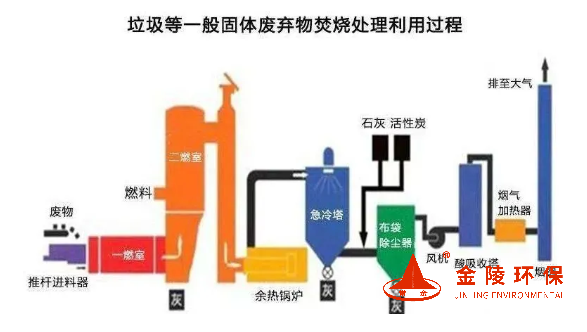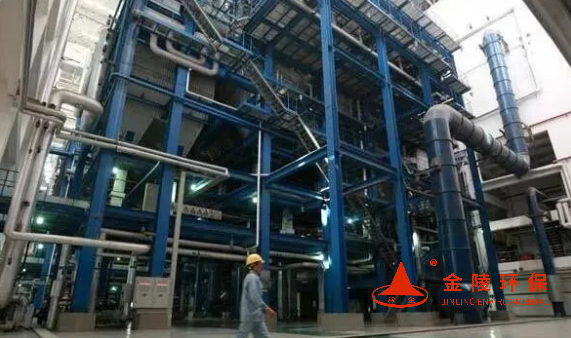
Principles for the prevention and control of solid waste pollutants: reduction, resource utilization, and harmlessness.
1. Pretreatment methods The types of solid wastes are complex, with different sizes, shapes, states, and properties, and generally need to be treated. There are three commonly used pretreatment techniques:
(1). Compaction. Use physical means to increase the accumulation of solid waste and reduce its volume to facilitate transportation and subsequent processing. The main equipment is a compactor;
(2). Broken. Use mechanical methods to destroy the internal cohesive force of the solid waste, reduce the particle size, and provide a suitable solid phase particle size for the follow-up;
(3). Sorting. According to the different material properties of the solid waste, the valuable and harmful components are separated before the final treatment to realize the "waste utilization".
2. Biological treatment method Biological treatment is a treatment technology that converts degradable organic matter in solid waste into stable living matter through the action of microorganisms. Biological treatment is divided into aerobic composting and anaerobic digestion. Aerobic composting is the process of using aerobic microorganisms to decompose the organic matter in solid waste under fully oxygenated spare parts. The resulting compost is a high-quality soil amendment and fertilizer. Anaerobic digestion is under anaerobic or hypoxic conditions. A biochemical process that uses the action of anaerobic microorganisms to convert biodegradable organic matter in waste into methane, carbon dioxide and stable substances.
3. The sanitary landfill method is different from the traditional landfill method. The sanitary landfill method adopts strict pollution control measures to minimize the pollution and hazards of the entire landfill process. During the design, construction and operation of the landfill The most critical issue is to control the random outflow of leachate containing a large amount of organic acids, ammonia nitrogen, heavy metals and other pollutants, so as to achieve centralized treatment after unified collection.

4. General physical and chemical treatment methods Some oily, acid, alkali or heavy metal-containing waste liquids produced in industrial production are not suitable for direct incineration or landfill, and simple physical and chemical treatments. After treatment, the aqueous solution can be recycled, the organic solvent can be used as an auxiliary fuel for incineration, and the concentrate or sediment can be sent to landfill or charcoal. Therefore, physical and chemical methods are also comprehensive utilization or pretreatment processes.
5. Safe landfill method Safe landfill is a disposal method for placing or storing hazardous waste in the environment to isolate it from the environment. It is the final disposal measure taken after various treatments. The purpose is to cut the connection between waste and the environment so that it no longer harms the environment and human health. Therefore, whether the connection between waste and the environment can be blocked is the key to the success of landfill treatment. A complete safe landfill should include waste receiving and storage systems, analysis and monitoring systems, pretreatment systems, anti-seepage systems, leachate collection and drainage systems, rainwater and groundwater collection and drainage systems, leachate treatment systems, leachate monitoring systems, Management system and public works, etc.

6. Incineration treatment method Incineration method is a high-temperature heat treatment technology, that is, a certain amount of excess air is used to carry out oxidative decomposition reaction with the treated organic waste in the incinerator. The toxic and harmful substances in the waste are oxidized and pyrolyzed at high temperature. destroyed. The characteristics of incineration disposal are that it can be harmless, reduced, and recycled. The main purpose of incineration is to incinerate the waste as much as possible, make the burned materials harmless and minimize the volume, and minimize the production of new pollutants to avoid secondary pollution. Incineration can not only dispose of urban garbage and general industrial waste, but also can be used to dispose of hazardous waste.
7. The pyrolysis method is different from incineration. The pyrolysis technology uses thermal energy to crack large molecular weight organics into relatively small molecular weight compounds or fuel gas, oil and carbon black, etc., under the condition of low oxygen partial pressure. organic matters. Pyrolysis treatment is suitable for organic solid wastes with a certain calorific value. The main influencing factors that should be considered for pyrolysis are the composition, particle size and uniformity of pyrolysis waste, moisture content, reaction temperature and heating rate. The high temperature pyrolysis temperature should be above 1000℃, and the main pyrolysis product should be fuel gas. The medium temperature pyrolysis temperature should be 600~700℃, and the main pyrolysis products should be heavy oil-like substances. . The low temperature pyrolysis temperature should be below 600℃, and the main pyrolysis product should be carbon black. After purification, the pyrolysis products are fractionated to obtain products such as fuel oil and gas.
Previous:没有了!